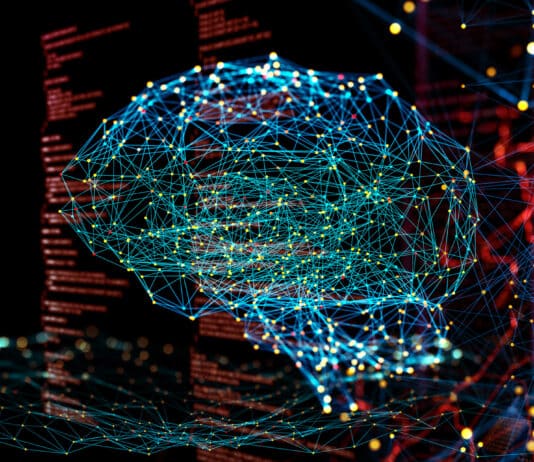Tag: ARTICLE
In November 2021, a popular Twitter user and cryptocurrency enthusiast @Oxflim tweeted about a particularly nasty incident that happened to him. He lost his...
Meta-attacks represent a sophisticated form of cybersecurity threat, utilizing machine learning algorithms to target and compromise other machine learning systems. Unlike traditional cyberattacks, which may employ brute-force methods or exploit software vulnerabilities, meta-attacks are more nuanced, leveraging the intrinsic weaknesses in machine learning architectures for a more potent impact. For instance, a meta-attack might use its own machine-learning model to generate exceptionally effective adversarial examples designed to mislead the target system into making errors. By applying machine learning against itself, meta-attacks raise the stakes in the cybersecurity landscape, demanding more advanced defensive strategies to counter these highly adaptive threats.
Neurodiversity is the concept that recognizes and embraces the wide range of human neurological variations. It acknowledges that individuals with diverse cognitive abilities and...
"Saliency" refers to the extent to which specific features or dimensions in the input data contribute to the final decision made by the model. Mathematically, this is often quantified by analyzing the gradients of the model's loss function with respect to the input features; these gradients represent how much a small change in each feature would affect the model's output. Some sophisticated techniques like Layer-wise Relevance Propagation (LRP) and Class Activation Mapping (CAM) can also be used to understand feature importance in complex models like convolutional neural networks.
The journey towards quantum resistance is not merely about staying ahead of a theoretical threat but about evolving our cybersecurity practices in line with technological advancements. Starting preparations now ensures that organizations are not caught off guard when the landscape shifts. It’s about being informed, vigilant, and proactive—qualities essential to navigating any future technological shifts.
The cybersecurity industry is constantly evolving, facing new threats and challenges every day. To stay ahead of the curve, protect sensitive information, and protect...
“Organizational bullshit” is a term coined to describe deceptive, vague, or otherwise misleading communication within an organization. “Organizational bullshit” is not an expletive. It...
Batch exploration attacks are a class of cyber attacks where adversaries systematically query or probe streamed machine learning models to expose vulnerabilities, glean sensitive information, or decipher the underlying structure and parameters of the models. The motivation behind such attacks often stems from a desire to exploit vulnerabilities in streamed data models for unauthorized access, information extraction, or model manipulation, given the wealth of real-time and dynamic data these models process. The ramifications of successful attacks can be severe, ranging from loss of sensitive and proprietary information and erosion of user trust to substantial financial repercussions.
A term first coined by the Japanese government, “Society 5.0” describes "A human-centered society that balances economic advancement with the resolution of social problems...
As the quantum era approaches, organizations face the daunting task of protecting their sensitive data from the looming threat of quantum computers. These powerful machines have the potential to render traditional cryptographic methods obsolete, making it imperative to explore innovative strategies for quantum readiness. One often overlooked yet highly promising approach is tokenization.
Adiabatic Quantum Computing (AQC), and its variant Quantum Annealing, are another model for quantum computation. It's a specialized subset of quantum computing focused on solving optimization problems by finding the minimum (or maximum) of a given function over a set of possible solutions. For problems that can be presented as optimization problems, such as 3-SAT problem, quantum database search problem, and yes, the factoring problem we are worried about, quantum annealers have shown great potential in solving them in a way that classical computers struggle with.
The 5G Core network is a Service Based Architecture. It evolves the traditional appliance based 4G Core Network to support services. It offers more...
A model inversion attack aims to reverse-engineer a target machine learning model to infer sensitive information about its training data. Specifically, these attacks are designed to exploit the model's internal representations and decision boundaries to reverse-engineer and subsequently reveal sensitive attributes of the training data. Take, for example, a machine learning model that leverages a Recurrent Neural Network (RNN) architecture to conduct sentiment analysis on encrypted messages. An attacker utilizing model inversion techniques can strategically query the model and, by dissecting the SoftMax output probabilities or even hidden layer activations, approximate the semantic and syntactic structures used in the training set.
Data spoofing is the intentional manipulation, fabrication, or misrepresentation of data with the aim of deceiving systems into making incorrect decisions or assessments. While it is often associated with IP address spoofing in network security, the concept extends into various domains and types of data, including, but not limited to, geolocation data, sensor readings, and even labels in machine learning datasets. In the realm of cybersecurity, the most commonly spoofed types of data include network packets, file hashes, digital signatures, and user credentials. The techniques used for data spoofing are varied and often sophisticated,
When attacked, some crypto projects and exchanges buckle and fold under pressure; KuCoin set the standard in 2020 for how to react to crypto...














